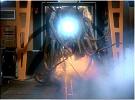ORIGINAL: LargeSlowTarget
Probably not well thought-out, but...
Translated into WitP:
1a. CAP penalty for JN and/or CAP benefit for USN growing with time
1b. related to this, penalty for JN strike escorts (hand signals, few radios), none for USN
2. limit of numbers of a/c that can be launched per given time per carrier
3. limit on number of CVs that USN can operate in one TF early in the war
4. JN strikes tending to be bigger, but prone to miss the target entirely, USN strikes tending to split up in uncoordinated smaller strikes (some of which failing to find target)
Question is how #3 can be achieved - by house rules in PBEM, Malthusian 'moral restraint' if playing against AI or by denying the player the ahistorical benefits of concentrating his CVs with an early war strike penalty (or a what-if-scenario with no penalty if we assume that the USN did have an early war doctrine for concentrated CV-TFs and the means, training and experience for such operations).
LST Do you realize that the whole basis for your arguement is NEGATIVE? The US
DID NOT operate CV's in groups larger than 1-2 during 1942---so that must mean
that they COULD NOT operate CV's in any larger number? And a rule PENALIZING
such behavior must be in the game. By this logic, Neither side should be able to
do anything that isn't exactly historical. What, the Japanese Player wants to try to
invade Australia? Never happened..., there for the Game should HALVE the values
of all troops he lands there! And now the cheating Japanese are actually forming
ASW convoys and TF's in 1942? Never happened..., so the game needs to HALVE
the ASW values of All Japanese Escorts! That's the kind of circular reasoning your
arguement is based on.
Jwilkerson provided the launch figures for all the CV battles of 1942..., and the num-
bers suggest that NEITHER side could get a strike of more than 100 in during that
time. No matter how many or few CV's were in how many TF's. Certainly seemed
to suggest that NEITHER SIDE had any real advantage, though the numbers leaned
just a little towards the US. Of course, thet would mean no "crutch" for the Japanese
Fan-Boys..., but it would be fair. And realistic... And Historical. DID NOT does not
mean COULD NOT! And any rule that pelalizes one side over the other should at the
very least be proven historical fact with no questions attached. This one is not.















